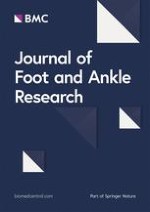Background
Healing rates of foot ulcers are unknown with the exception of specialist centres where it is between 80-90%. The aim of this study was to ascertain average healing rates for people with diabetic foot ulceration attending a Multidisciplinary Diabetic Foot Team (MDFT) clinic by implementing the University of Texas wound classification system into clinical practice.
Methods
All patients presenting to the MDFT with active ulceration during 2010 had their ulcer classified using the Texas system and were entered into the audit. These ulcers were then monitored until healing or until the end of the data collection period (December 2012). A patient with multiple ulcer sites had each ulcer monitored separately. The average healing rates could then be calculated and compared.
Results
90 patients with ulcers were included with a total of 146 ulcers monitored. 32 ulcers were excluded as patients had either moved away, died, refused treatment, or withdrawn from the study due to non-concordance with treatment. 109 of the remaining 114 ulcers had healed by the end of the audit period (95.6%)
The average healing rates were:
-
Overall = 16.08 weeks (range 1-74)
-
Texas classification A = 10.45 weeks (range 2-20)
-
Texas classification B = 12.12 weeks (range 3-30)
-
Texas classification C = 14.2 weeks (range 1-42)
-
Texas classification D = 28.4 weeks (range 4-74)
In relation to amputation rates:
-
Texas classification A=0
-
Texas classification B = 1 minor
-
Texas Classification C = 2 minor
-
Texas classification D = 3 minor and 2 major amputations.
Conclusion
The Texas classification system was easy to use in clinical practice. The data demonstrates that average healing time varied according to the ulcer classification at presentation. To our knowledge, this has not previously been investigated. In addition, overall healing rates are higher than previously published data suggests, whereas amputation rates are similar to those reported using this classification system. It is recommended that the audit be continued to increase the sample sizes to identify any intergroup variation in mean healing times.
This article is published under license to BioMed Central Ltd. This is an Open Access article distributed under the terms of the Creative Commons Attribution License (
http://creativecommons.org/licenses/by/4.0), which permits unrestricted use, distribution, and reproduction in any medium, provided the original work is properly cited. The Creative Commons Public Domain Dedication waiver (
http://creativecommons.org/publicdomain/zero/1.0/) applies to the data made available in this article, unless otherwise stated.











